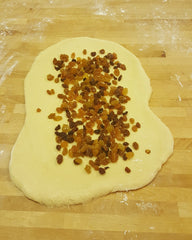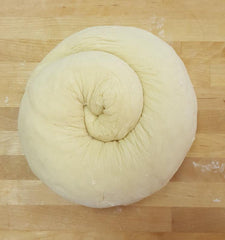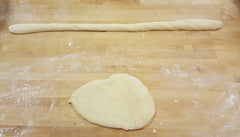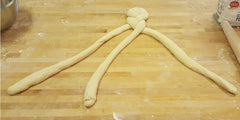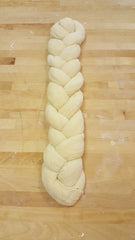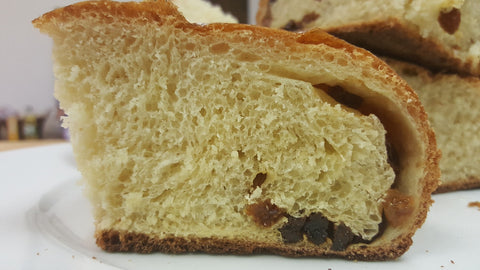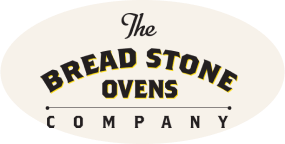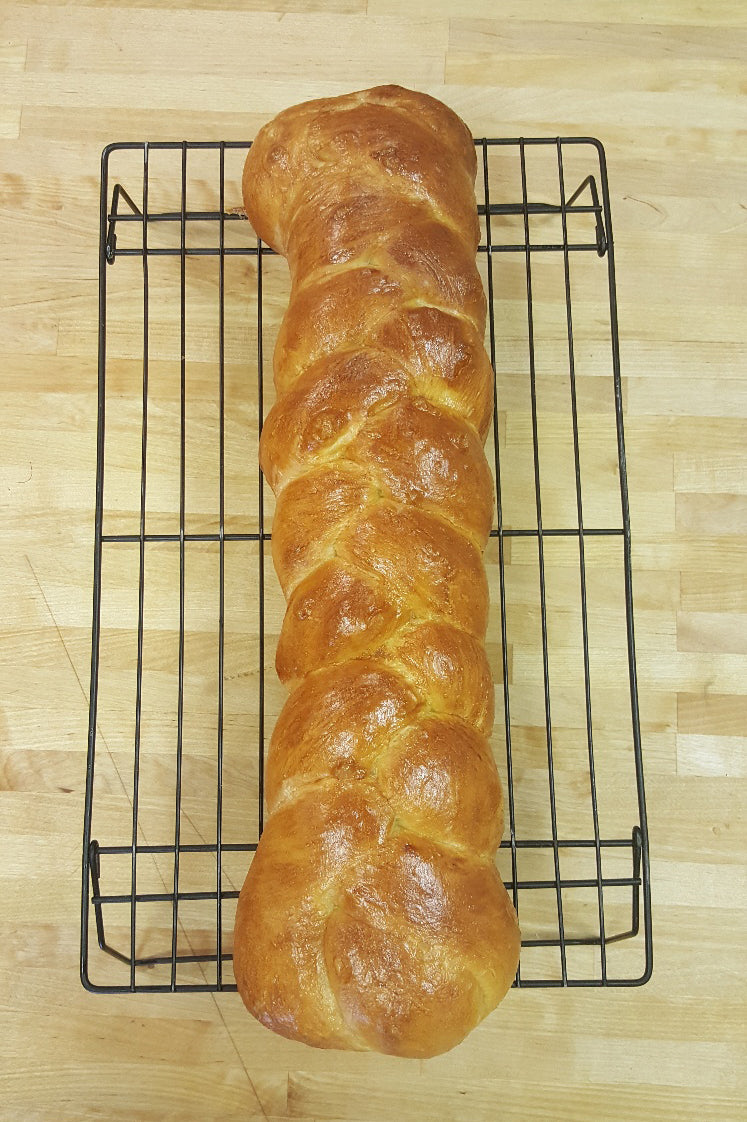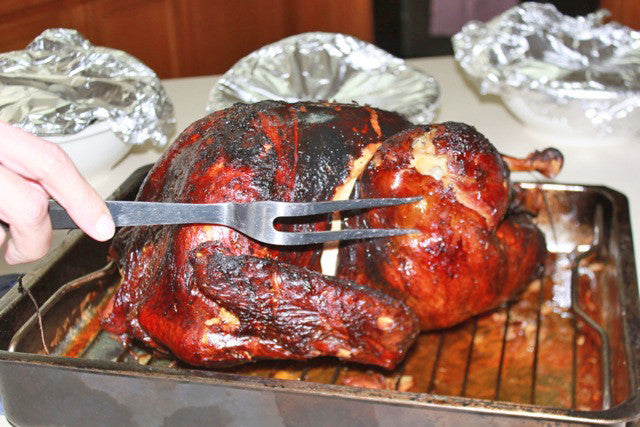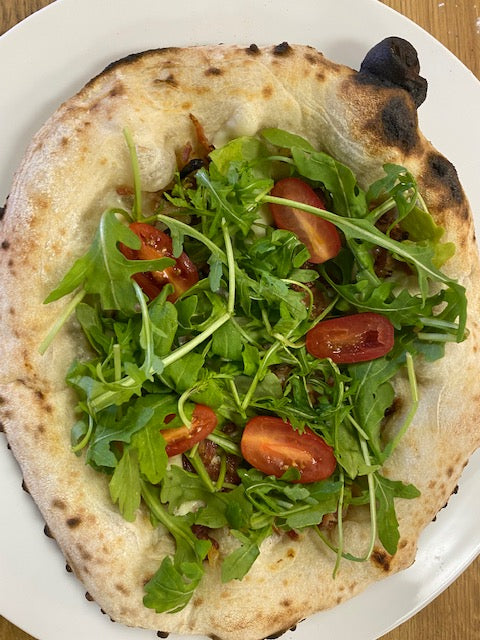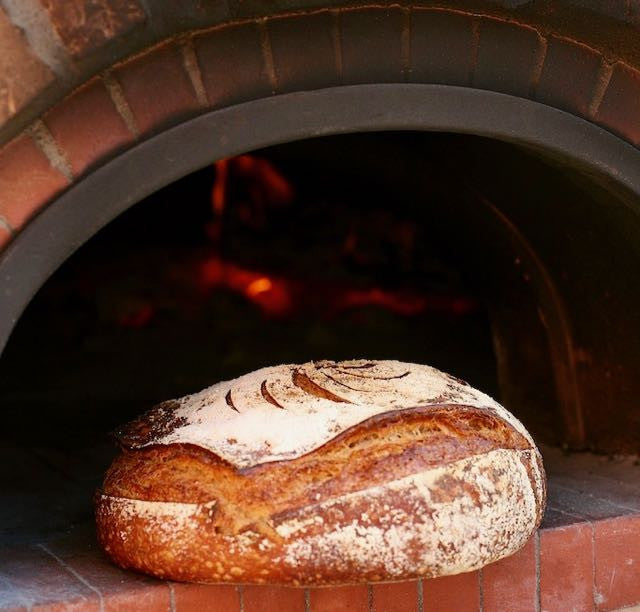This year, Wednesday, September 20th, marks Rosh Hashanah, or Jewish New Year. As with most holidays, there are a variety of festive foods that help celebrate the “Head of the Year”, but one of the most ubiquitous items to grace the holiday table is challah.
This enriched dough bread is normally fortified with oil, honey, and eggs, then braided into a beautifully decorated loaf. We also tried our hand at “turban” challah, the shape of which symbolizes the year as a circle, and observed the tradition of adding raisins to wish everyone a “sweet new year”.
Whether or not you observe Rosh Hashanah, challah makes an impressive addition to your table (not to mention some pretty major french toast).
Ingredients
Warm (not hot) water 355 grams (divided)
Active dry yeast 7 grams
Sugar 4 grams
1 egg + 1 egg for making egg wash
3 egg yolks
Honey 85 grams
Canola oil 56 grams
Salt 8 grams
All-Purpose or Bread flour 600 to 720 grams
Optional
Raisins or chocolate chips (to incorporate)
Sesame seeds, poppy seeds, kosher salt (for topping)
Makes 2 regular loaves, 24 dinner rolls or 1 mega-challah
Directions
Fire oven to 350 degrees Fahrenheit
1. Add sugar to 60 grams warm water and bloom your yeast (add the yeast to the sugar water and wait until it is frothy, about 10 minutes). If your yeast doesn’t bloom, start over with fresh yeast or prepare for disappointment. This is a picture of very happy, active yeast.
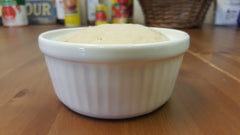
2. When your yeast is active, add the remaining water, 1 egg, 3 egg yolks, honey, canola oil, and salt. Whisk or use a paddle attachment to combine the ingredients.
3. Begin adding flour, 100 grams at a time, and continue to mix until a smooth, elastic dough forms. The dough shouldn’t be sticky. If you are using a mixer, you may need to switch to a dough hook attachment or turn the dough out and knead by hand. Once your dough comes together, allow it to rest for 5 minutes. Knead or mix an additional 10 minutes, then place the ball in a lightly oiled bowl, cover with plastic wrap, and refrigerate overnight.
4. Turn your dough out on to a floured surface and cover it with plastic wrap or a damp tea towel. Allow the dough to proof until it has doubled (about one hour after it comes to room temperature), then punch it down. Allow the dough to double again, then punch it down. It’s very important to let the dough rise and to expel any extra air pockets. This bread has a pretty tight crumb and, if your bread rises too aggressively after it has been shaped, you will lose definition in the finished loaf (see: my turban challah).
5. Once you have punched the dough down a second time, you are ready to shape your loaves! I chose a three strand braid and a circle or “turban” challah. Divide your dough in two and set half aside.
